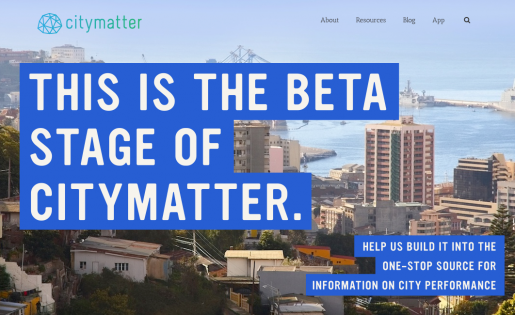There isn’t a single answer to my challenge of making city data engaging and useful for citizens. During my research, however, I arrived at some insights I hope will help move the conversation about open data forward.
- We have to flip the open data model: Current “open data” solutions are built based on what data we have, instead of what data citizens want. It’s time to flip this model and start developing human-centric open-data solutions.
- We have to make data part of daily news streams: We have reached a point where there is wide awareness of open data’s benefits, and both governments and corporations are making data available via APIs updated in real time. Journalists must find a way to incorporate all this data into newsrooms’ practices.
- We have to rethink the local news ecosystem: Local news must go beyond breaking news and incorporate investigative journalism initiatives as well as daily data indicators that can be useful for everyday decisions in business, real estate, health, etc.
- We have to evaluate the status of individual open gov initiatives: Are current open data / open gov solutions made to comply with a PR strategy, or to generate insights that will make government more efficient? The best way to answer this question is by looking at local open data portals and evaluating the quality of data, periodicity of publishing, and success in breaking departmental silos.
The experience of local news is completely broken. During the last 50 years, the way people get news has changed, from morning local newspapers, to evening newscasts, to the Internet. And yet, very few Internet-based local news outlets seem to be profitable.
Additionally, the current news diet has changed, and it now consists of three “main courses”: international news, national news, and friends’ updates. This gap, between national events and local ones, is challenging the survival of local news ecosystems. As a result, it’s making it harder and harder to sustain the kind of investigative journalism necessary for a strong system of check and balances at the local level. Thus, in my opinion, this challenge is important not only for journalism but for democracy in general.
Status and next steps
During my fellowship, we ran focus groups, surveys, interviews with industry players, and brainstorms to determine what data could be truly useful for citizens. We compiled answers, plotted them in spreadsheets and studied current “quality of life” indexes from the World Bank, International Standards Organization, Inter-American Development Bank, etc.

Citymatter is developing “beta” prototype of its platform for the city of San Francisco. Image from Citymatter.
We then built seven categories of data and made a simple prototype over a three-day design sprint. This prototype is our “alpha” solution, built with actual data, but not updated in real time. We have presented it to relevant stakeholders, and there has been great interest in supporting the development of a “beta” prototype. To learn more about Citymatter visit citymatter.co.
The following are the next steps in the project:
- Development of partnerships with private data sources to address the scarcity of engaging, useful data from governmental sources.
- Development of open data and online text-scrapping best practices.
- Development of UX / UI guidelines for display of local data in order to improve the user experience of accessing data.
- Development of “beta” prototype of Citymatter platform for the city of San Francisco.
Takeaways
Some (but by no means all) of the most important lessons I have learned are:
- It is one thing to work with data and another to work around the absence of data. We must build solutions based on the needs of citizens, and this means that at some moment we’ll have to choose from different data sources. Interestingly, in most cases, data coming from private parties will provide answers that have a smaller reach, but are more clearly defined.
- Data alone is not enough. A chart is a dead thing, so publishing some stats or pie charts on an “open data” portal is not nearly enough to create engagement with a citizenship. We must strive to build human narratives whenever possible.
- People are ready to move from data, to trends, to insights. We have the computational power to study historical trends and present users with insights about possible future events. People are ready to move from bar charts to recommendations in human language, such as “possible spike in property crimes due to beginning of summer — additional safety measures recommended when parking bikes on campus during this season”.
Lope Gutiérrez-Ruiz (@hello_lope) is a John S. Knight Fellow at Stanford University and co-editor and co-founder of Gopher Magazine and In-House International.
 This post originally appeared on the blog for John S. Knight Journalism Fellowships at Stanford. The John S. Knight Journalism Fellowships at Stanford foster journalistic innovation, entrepreneurship and leadership. Each year, twenty outstanding individuals from around the world the resources to pursue and test their ideas for improving the quality of news and information reaching the public.
This post originally appeared on the blog for John S. Knight Journalism Fellowships at Stanford. The John S. Knight Journalism Fellowships at Stanford foster journalistic innovation, entrepreneurship and leadership. Each year, twenty outstanding individuals from around the world the resources to pursue and test their ideas for improving the quality of news and information reaching the public.

